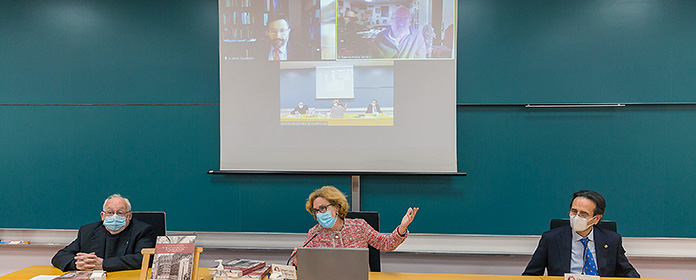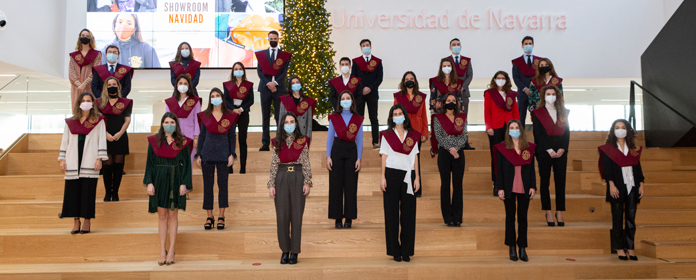2013_09_30_CIMA_Una familia promueve una beca para impulsar la investigación en enfermedad de Huntington del CIMA
A family promotes a scholarship to boost the research in Huntington's disease from the CIMA
Josefina Garre, a 30-year-old dietician from Murcia affected by this neurodegenerative pathology, and her siblings have made a donation to research for this disease.
Josefina Garre, a 31 year old dietitian from Murcia with Huntington's disease, has visited the research center Applied Physician (CIMA) of the University of Navarra to promote the scholarship of research "Josefina Garre". The goal is to reinforce the scientific work carried out by Dr. Isabel Pérez-Otaño in this neurodegenerative pathology. Specifically, Josefina has donated part of her disability pension and her brothers, Antonio and Alberto, a similar economic endowment. Other family members and friends are joining to fill in the contribution.
The Garre family contacted CIMA upon learning of a study by Dr. Pérez Otaño published in Nature Medicine, which shows that a molecule called GluN3A causes the pathological elimination of neuronal connections in Huntington's disease.
Neurodegenerative disorderHuntington's disease is the neurodegenerative disease with the highest incidence after Alzheimer's and Parkinson's; it is hereditary and is characterized by the appearance of involuntary and uncontrolled movements. In advanced stages it causes severe motor and cognitive impairment, psychiatric disorders and dementia. Although the mutation Genetics manager of the disease (the abnormal elongation of a protein called huntingtin) was discovered 20 years ago, the mechanisms that cause the loss of connections and neuronal death are unknown and to date there is no cure or effective treatment.
Dr. Pérez-Otaño's group is a world leader in the study of glutamatergic receptors of subject GluN3A. During the development of the brain -until late adolescence- this receptor is responsible for eliminating unnecessary connections and serves to correct errors. In adults the GluN3A receptor almost disappears. But in people with Huntington's disease, GluN3A expression is maintained and causes the destruction of valid connections. Using genetic methods, the scientists at CIMA found that suppressing this abnormality in mice with the disease prevents neurodegeneration and motor and cognitive impairment. "The finding represents a breakthrough in the development of therapies to stop this serious disease, based on blocking brain receptors containing the GluN3A molecule," explains Dr. Pérez-Otaño.





